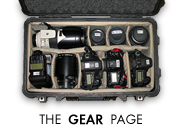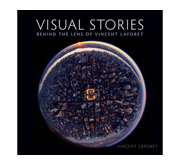How Much Did I Shoot in Beijing?
 Well, I just got done copying the files from my trusty 17″ MackBook Pro and 3 External Hard Drives over to my server overnight… and here are the facts:
Well, I just got done copying the files from my trusty 17″ MackBook Pro and 3 External Hard Drives over to my server overnight… and here are the facts:
In Beijing, with a total of 6 cameras, I shot: 28,444 files for a total of a whopping 480 Gigabytes of Images! That’s INSANE! Even I am shocked.
So I looked into at what Sports Illustrated shot during the Olympics with their ten staff photographers there – SI shot over 300,000 images of which their staff kept 17,000. One of their editors took that down to 1046 “super selects” and then their director of photography Steve Fine, edited his selection down to 135 images. That means their “best of” turned out to be 0.045% of what they shot.
These numbers may – and should – look crazy to most of you. But truth be told – it’s what happens when you have cameras that now shoot bursts at 10 frames per second – and when you’re likely firing not one – but two or three cameras at once (via remotes.) In fact mon ami Bill Frakes had more than 18 cameras firing at once each time someone crossed the finish line at the Athletics (Track & Field) venue for example- so imagine the volume coming out of the track venue. Hallucinating.
With simple arithmetic, it looks like I shot just a little under what the SI shooters did – but there is one important distinction: I saw many of them editing their images live on the back of their cameras. In other words – they would look at every series of images after they’d shot them (either during events or in between each rotation for example) and delete the poor or out of focus images – this to make sure that a “bad” one didn’t make it into the magazine – as someone else would end up editing their images. I on the other hand – never deleted a single frame – and that’s because I would be the only one editing my take each day (and not have to explain myself for missing a key frame to any editor.) I don’t believe in deleting images on the back of the camera myself – I’ve deleted quite a few keepers out of “sleep deprivation” or just by rushing in the past, and in fact missed more moments that happened right in front of me because I was “chimping” (term used for looking at back of one’s camera, and jumping up and down and howling like an ape, when one finds a good image, often showing it off to the person to the left or right of you.) So I keep everything. Given that those guys tended to mount a few more remote cameras thanI did – I’m sure it evens out things a bit further.
My next step will be to open my Aperture library from the Olympics back up here in New York – and start to select thousands of “rejects” from these takes – all of the duplicate remote files, out of focus frames, files that have no potential for future re-use. And purge those. I assume I’ll get rid of more than 50% of the volume.
So out of the 28.444 frames that I shot, how many of them had “one star or better?” 1,509. Of those how many were transmitted? 273 – that’s just under 1%. Yikes…
Finally – just to give you perspective, shooting this much volume equates to shooting 790 rolls of 35mm 36 exposure rolls of film. If you assume that while we commonly had 15-18 hour days in Beijing, we generally got to shoot only for 6-10 hours on average (let’s say 7 hours of total shooting on average) that means we pressed the shutter: 1,777 times per day, 253 frames per hour, or 4.23 images per minute – which sundenly makes this seem a tad bit more reasonable – that with the goal of the Newsweek crew to produce 4-10 good frames per day.
My ultimate goal will be to put every image with one star of better into one project in my Olympics Aperture library – I will then export that project and re-import it into my main library. That way I can always have access to the important images – without having to bog down my large main library with images I’ll likely never go back to. If a strange request comes down the line – I can always go back to my Olympics library and see everything there – that Aperture library is 36.31 GB by the way – as each image has a large preview generated within it for example. Having these large previews embedded within the library would allow me to travel to future speaking engagements/workshops and show people raw takes of each shoot for example – without needing to travel with the close to 500GB of RAW images.
So there it is – we’ve veered far off of the path of shooting one sheet of film at a time haven’t we?













Been following your blog during the Olympics, even using under 1% of the images is impressive. Catching the shoot that will get the viewers to say wooow is worth it.
Keep up the good work Vincent.
Thanks for sharing.
Bernt-Inge
Whoow ! really impressive. But what’s a pity for all the not selected pictures 🙁
Hi Vincent,
Thanks for sharing this info and background on your shooting ratio.
You mention that you copy everything to your server. Do you use a simple fileshare on your server or do you have a dedicated image server with database etc. running on the machine?
How do you manage that with your separate Aperture library?
Thanks,
Tom
It’s refreshing to read about that 1500/28500 ratio – after all one does wonder how many shots the really good photographers need to get those few great ones we saw from you during the olympics.
Wow. This are aresome facts… very interesting!
Ouch my head hurts just reading those numbers
Even though you’ve brought it down to 38 gigs, I assume you are keeping the full 480 gigs somewhere. On a bigger scale, how do you manage the archiving the massive amounts of data (I’m sure you have many projects that produce several hundred gigs)?
Tom & Wayne – I’m working on something more details to talk about how I archive stuff. It’s going to take a little while but should hopefully be tasty…
This is very interesting. I will use this article to show my students the daily wiffs of a photo pro.
But it gets you wondering – doesn’t this lean to meaningless? I guess you weren’t the only photographer there, and with hundreds of shooters out there, the number of poor or unusable images is really a scary consept.
It makes me think that maybe I’m a good photographer after all, when 8 out of 800 holiday images turn out to be more than usable.
I’m an amateur with some point and shoot camera and I usually take many shots to try to have at least one focused or perfectly framed photo.
By taking bursts of photos, the photos are essentially the same, so you keep them all or keep just one, thus I believe that all those photos could be reduced to some thousand photos.
I’ve read this post quite quickly because I have to go to sleep (it’s too late here! hehe) but it’s quite interesting when you say something about how you keep your images organized and how you “play” with Aperture’s library.
Everybody has a different method to keep their archive organized, but I think many people has a wrong method (not you!).
Thank you for writing your blog.
It’s cool to get hard numbers like that from a guy in your position. Do you delete many images while you are shooting to get rid of things that are obviously bad? Also, the D90 looks pretty cool, I have to say I am Jonesin’ pretty heavy on that. I liked your point about the guys with video rights and how this affects that situation. Interesting to see how that plays out. I’ve said this before, but I’m a teacher and my photo students really benefit from a blog like this because they can learn, and also get a better idea of what your career looks like and the lengths you go in your professionalism. Thanks!
you’re awesome….your pictures are great and those numbers are amazing, but that one percent will most likely be really great pictures.
pacer521
http://culturedecoded.wordpress.com/
Do you perform your picture editing on the MackBook Pro or a tower?
Just a big thanks! Fantastic stuff, i’ve been following your posts throughout the olympics and loved every one. Good work.
You mentioned above that you’re putting together a post on your archiving methodology, will you be outlining your workflow at all?
Thanks again.
Fraser – yes – I will be outlining my workflow at some point.
Hcabbos – I do not delete a single image – ever. Sometimes in camera in shoots where the action has clearly stopped… but for the most part never – because you never know if that weird image might actually look good to someone else’s eyes. And I do my editing on the field on a 17″ MacBook Pro – and on a MacPro tower when I’m in the studio.
Interesting stuff. I’m a rockphotographer myself. And I thought I had trouble with my imageflow. In the filmage Iwas happy when I got 2 to 4 great images each 36-film. Nowadays I shoot make 80-100 clicks (1star=10percent)during the first 3 songs of a concert. That’s about 100 frames in ten minutes: That’s 0.17 frames a second. A long long long way from burst mode 😉 I have a question: do you have to replace the shutter after an event like this? I don’t know how long your pro shutter lasts but. In this case not more than a few months? Or do you just buy a new camera?
Is that 480GB for one set of images, before a back-up copy? Doing the math then, it would seem you probably shot a lot of RAW. If so, it would be interesting for you to touch on how you deal with RAW on deadline and in particular the camera buffer limitations imposed by RAW in fast paced events where you might have important action plus extended jubo that quickly fills the buffer. And the SI photographers…. are they still shooting RAW? I recall reading in the past that they did.
Love to hear how you manage these when you get your home base. Do you keep separate Aperture Libraries on your principal storage or do you merge them into a single large Library? 😀 Would love to hear about that part of the workflow…
RM
In my opinion the classic sports photography has changed beyond recognition. Now it is just a matter of how much gear you have and how lucky you are. The photographer just can’t be wrong by shooting simultaneously three or four cameras ten frames per second each. Just don’t get me wrong but those best pictures are more a piece of luck than intentional actions. That’s how you get your 0,045% “best of” rate.
Search engine optimization (大阪 デリヘル) is to improve the homepage so that its own WEB site is displayed in the high rank when the retrieval is put by the key word and the key phrase that relates to the content of the homepage in the search engine called Google, Yahoo, and MSN.
Естественно присоединяюсь к вышесказанному!
Amazing Site I like it. It Was Quite Interesting NiceWork I appreciate the information you provided Excellent post. Keep it up! Good day!
7
Just killing some time on Digg and I found your entry. Not normally what I like to read about, but it was certainly worth my time. Thanks.